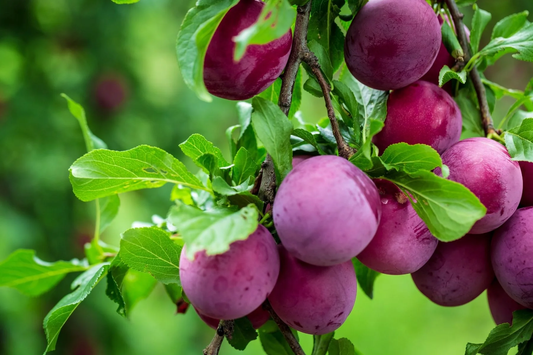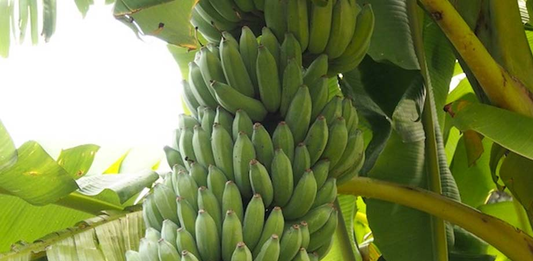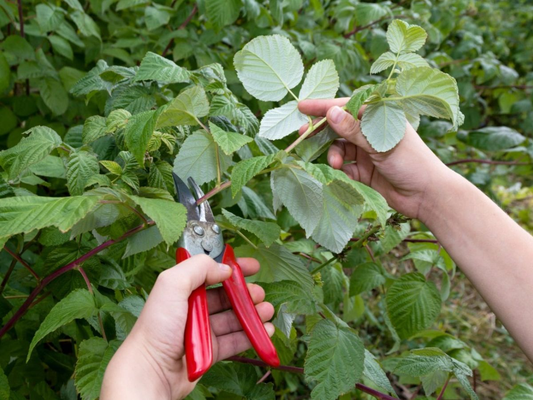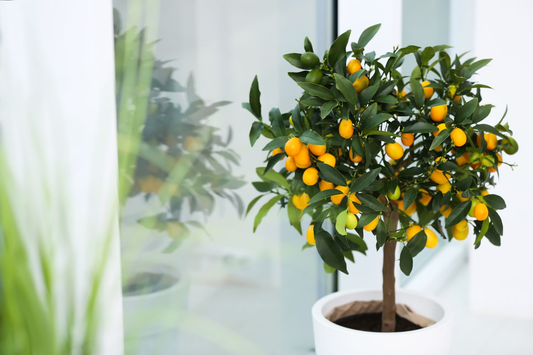Best Flowering Shrubs for Gardens
Share
- 1. Introduction
- 2. Factors to Consider When Choosing Flowering Shrubs
- 3. Popular Flowering Shrubs for Full Sun
- 4. Flowering Shrubs for Partial Shade
- 5. Flowering Shrubs for Full Shade
- 6. Flowering Shrubs for Fragrance
- 7. Flowering Shrubs for Drought-Tolerant Gardens
- 8. Unique Flowering Shrubs with Special Features
- 9. Tips for Planting and Caring for Flowering Shrubs
- 10. Conclusion
- 11. Frequently Asked Questions
1. Introduction
Flowering shrubs are an essential component in garden design, offering not only vibrant color but also structural depth, seasonal interest, and an array of functional benefits. These versatile plants can serve a multitude of purposes, from providing focal points in your landscape to creating privacy and enhancing the overall aesthetics of your garden. With a variety of shapes, sizes, and colors, flowering shrubs are suitable for almost every type of garden, whether small urban spaces or expansive country estates. By strategically selecting the right varieties, gardeners can enjoy a thriving, beautiful garden that transitions through the seasons with ease.
The aesthetic and functional advantages of flowering shrubs are numerous. They add a visual pop to your garden, contributing color and texture year-round. Some flowering shrubs bloom in the early spring, while others offer late-season blooms, ensuring that your garden remains alive with color well into fall. Beyond their beauty, many flowering shrubs also provide ecological benefits, such as attracting pollinators like bees, butterflies, and hummingbirds. This makes them a vital component in supporting local wildlife and promoting biodiversity within your garden.
In this article, we will explore some of the best flowering shrubs that can enhance your garden's beauty, considering various factors such as sunlight, size, bloom time, and climate suitability. Whether you’re looking for a shrub that thrives in full sun or one that flourishes in partial shade, this guide will help you choose the perfect shrubs to meet your needs.
Key Benefits of Flowering Shrubs in Your Garden
- Year-round Interest: Flowering shrubs provide color and texture throughout the seasons.
- Pollinator-Friendly: Many flowering shrubs attract beneficial insects, improving the health of your garden ecosystem.
- Privacy and Shelter: Larger shrubs can serve as privacy screens or windbreaks, enhancing the functionality of your outdoor space.
- Low Maintenance: Once established, many flowering shrubs require minimal care, making them perfect for busy gardeners.
Purpose of the Article
- Highlight the different types of flowering shrubs that can thrive in various garden conditions.
- Provide detailed information on the benefits, bloom times, and growth habits of these shrubs.
- Help you select the right flowering shrubs for your specific garden needs, whether for aesthetic purposes, privacy, or attracting pollinators.

2. Factors to Consider When Choosing Flowering Shrubs
Choosing the right flowering shrubs for your garden involves careful consideration of several factors. These factors ensure that your shrubs thrive and provide the desired visual impact while maintaining health and longevity. Below are key aspects to keep in mind when selecting the perfect flowering shrubs for your garden:
Climate and Hardiness Zones
- Importance of Climate Compatibility: Flowering shrubs are available in many varieties, each with different hardiness requirements. It’s crucial to choose shrubs that are suited to your local climate to ensure they grow well and survive year-round.
- USDA Hardiness Zones: Understanding your USDA hardiness zone is vital in determining which shrubs will thrive. For example, shrubs like lilacs (zone 3-7) need colder climates, while others like bougainvillea (zones 9-11) prefer warmer regions.
Soil Type and Drainage
- Soil Texture: Shrubs require specific soil types to grow optimally. Sandy soils drain quickly but may not retain nutrients, while clay soils are nutrient-rich but can hold too much moisture, leading to root rot.
- Soil Requirements for Flowering: Most flowering shrubs thrive in loamy soil, which provides a balance of drainage and nutrient retention. However, always check the specific needs of the shrub you're considering to avoid planting in unsuitable soil.
- Improving Drainage: If your soil has poor drainage, you can amend it by adding organic matter or creating raised beds to help your shrubs flourish.
Sunlight Requirements
- Full Sun: Flowering shrubs such as roses and lavender require at least 6 hours of direct sunlight each day to produce abundant flowers.
- Partial Shade: Some shrubs, like azaleas and hydrangeas, do well with 3-6 hours of direct sunlight but benefit from some afternoon shade to protect them from intense heat.
- Full Shade: Shrubs such as rhododendrons and ferns thrive in low-light areas, making them ideal for shaded spots under trees or along building foundations.
Size and Growth Habits
- Growth Pattern: Pay attention to the mature size of the shrub to ensure it fits your garden space. Some shrubs may grow wide and require regular pruning, while others may have more compact growth.
- Height and Spread: Choose shrubs with appropriate height and width for the location where they will be planted. Shrubs that grow too large may crowd out other plants, while small shrubs may be overwhelmed in larger garden beds.
Maintenance Level
- Low-Maintenance Shrubs: Some flowering shrubs, such as spirea or boxwood, require minimal care once established. These shrubs are ideal for gardeners who prefer a low-maintenance garden.
- High-Maintenance Shrubs: Other flowering shrubs, like roses or peonies, may require more frequent pruning, deadheading, or pest control to maintain their appearance and health.
- Consider Your Time Commitment: Choose shrubs that match your level of commitment and gardening expertise. If you're a beginner, low-maintenance varieties may be your best option.
3. Popular Flowering Shrubs for Full Sun
Full sun gardens offer the opportunity to grow a wide variety of vibrant and hardy flowering shrubs. These shrubs thrive in areas that receive at least six hours of direct sunlight per day, providing not only beauty but also attracting pollinators. Below are some of the most popular flowering shrubs for full sun, each offering unique characteristics and care tips.
Roses
- Variety: Roses are available in a multitude of varieties, including hybrid teas, floribundas, and climbing roses. They offer a wide range of colors, including red, pink, white, and yellow.
- Blooming Season: Roses bloom primarily in spring and summer, with some varieties offering repeat blooms throughout the season.
- Care Tips: Roses thrive in full sun and benefit from regular pruning to maintain their shape and promote new growth. Keep them well-watered but ensure proper drainage to avoid root rot. Regularly inspect for pests like aphids and mites.
Lilacs
- Fragrance: Lilacs are known for their sweet, intoxicating fragrance that fills the garden during their bloom time.
- Color Range: Common lilac colors include shades of purple, lavender, and white, with some varieties offering pink hues as well.
- Maintenance: Lilacs are relatively low-maintenance, requiring well-drained soil and occasional pruning after flowering. Be sure to remove spent blooms to encourage the growth of new flowers for the following year.
Hydrangeas (Sun-Loving Varieties)
- Varieties: Among the sun-loving hydrangeas, Hydrangea paniculata and Hydrangea arborescens are the most popular. These varieties thrive in full sun and produce large, showy blooms.
- Blooming Season: These hydrangeas bloom in late summer, offering large clusters of flowers in shades of blue, pink, and white.
- Care Tips: Hydrangeas in full sun require well-drained, moist soil. Prune them after they bloom to maintain shape and encourage fresh blooms the next season. Some varieties may require a little shade in extremely hot climates.
Butterfly Bush
- Attracts Pollinators: The butterfly bush is renowned for attracting butterflies, bees, and hummingbirds with its fragrant flowers.
- Blooming Season: This shrub blooms from summer into fall, producing an array of tubular flowers in purple, pink, and white hues.
- Care Tips: Butterfly bushes thrive in full sun and well-drained soil. Deadhead regularly to prolong blooming and prevent self-seeding, which can lead to invasive growth.
Table of Popular Flowering Shrubs for Full Sun
| Shrub Name | Bloom Time | Flower Color | Size | Key Care Tip |
|---|---|---|---|---|
| Roses | Spring-Summer | Red, Pink, White | 3-5 feet | Prune regularly |
| Lilacs | Spring | Purple, White | 5-10 feet | Needs well-drained soil |
| Hydrangeas | Summer | Blue, Pink | 4-6 feet | Requires pruning after flowering |
| Butterfly Bush | Summer-Fall | Purple, Pink | 4-10 feet | Deadhead to prolong blooming |
4. Flowering Shrubs for Partial Shade

Partial shade gardens offer a perfect environment for many beautiful flowering shrubs that prefer a bit of relief from the intense midday sun. These plants can thrive in areas that receive filtered sunlight or only a few hours of direct sunlight per day. Below are some of the best flowering shrubs that do well in partial shade, each with unique blooms and growth habits.
Azaleas
- Varieties: Azaleas come in both deciduous and evergreen varieties. Deciduous azaleas lose their leaves in winter but produce vibrant flowers in spring, while evergreen varieties retain their leaves year-round, providing constant foliage.
- Blooming Season: Azaleas bloom primarily in spring, with some varieties offering extended blooms in late spring or early summer.
- Flower Color: Azaleas offer a wide range of colors, including white, pink, red, and purple, often in showy clusters.
- Growth Conditions: Azaleas prefer acidic, well-drained soil and moderate watering. They thrive in areas with partial shade, especially in the afternoon, as they don’t tolerate harsh sunlight. Mulching helps to maintain soil moisture and protect the roots.
Camellias
- Winter Blooms: Camellias are well-known for their stunning winter blooms, often flowering when most other plants are dormant, bringing much-needed color to the garden in colder months.
- Ideal Growth Conditions: Camellias prefer slightly acidic, well-drained soil and a sheltered location with partial shade. They flourish with a bit of protection from the afternoon sun and should be watered regularly to maintain consistent moisture.
- Maintenance: These plants require minimal pruning and benefit from a layer of mulch around their roots to retain moisture, especially in summer. Watch for pests like aphids and scale that can affect their foliage.
Fuchsia
- Hanging Flowers: Fuchsias are known for their unique hanging flowers, which come in shades of pink, purple, and red. These flowers are perfect for adding a pop of color to shaded areas or hanging baskets.
- Thrives in Shady Spots: Fuchsias do best in partial shade and require regular watering to keep the soil moist, but not soggy. They can tolerate the cooler, shaded conditions where many sun-loving plants would struggle.
- Growth Conditions: Fuchsias require well-drained, fertile soil. A bit of protection from direct afternoon sun will keep them happy, and they may need occasional pruning to maintain their shape and encourage new blooms.
Bleeding Heart
- Unique Flowers: Bleeding Heart is known for its delicate, heart-shaped flowers that dangle from arching stems. They come in shades of pink and red and are a favorite in shaded gardens for their romantic and whimsical appearance.
- Blooming Season: Bleeding Hearts bloom in spring and early summer, often fading as the heat of summer sets in.
- Growth Conditions: Bleeding Heart thrives in moist, well-drained soil and prefers shaded areas. It is an ideal plant for the cooler, shaded corners of your garden. It’s important not to prune too heavily as it may damage the plant.
Table of Flowering Shrubs for Partial Shade
| Shrub Name | Bloom Time | Flower Color | Size | Key Care Tip |
|---|---|---|---|---|
| Azaleas | Spring | White, Pink, Red | 3-6 feet | Needs acidic soil |
| Camellias | Fall-Winter | White, Red, Pink | 4-10 feet | Mulch to retain moisture |
| Fuchsia | Summer-Fall | Pink, Purple, Red | 1-3 feet | Water regularly |
| Bleeding Heart | Spring-Summer | Pink, Red | 1-3 feet | Avoid heavy pruning |
5. Flowering Shrubs for Full Shade

Full shade gardens can be tricky to plant, but there are several beautiful flowering shrubs that thrive in areas with little to no direct sunlight. These shrubs offer stunning blooms and lush foliage, perfect for those shady corners of your garden. Below are some excellent choices for full shade, each with its own unique characteristics and care requirements.
Japanese Pieris
- Early Spring Blooms: Japanese Pieris, also known as Andromeda, blooms in early spring with clusters of small, bell-shaped flowers. The blooms appear in shades of white and pink and are a striking sight against the glossy evergreen foliage.
- Glossy Foliage: The plant features leathery, glossy leaves that are dark green throughout the year. New growth often starts out bronze or reddish, adding an extra dimension to its beauty.
- Growth Conditions: Japanese Pieris thrives in acidic, well-drained soil. It prefers partial to full shade and will do best in a sheltered area with protection from strong winds.
Hydrangea (Shade-Loving Varieties)
- Types That Thrive in Deep Shade: Some hydrangea varieties, like Hydrangea macrophylla (bigleaf hydrangea) and Hydrangea quercifolia (oakleaf hydrangea), perform well in shady locations, providing lush foliage and large, showy blooms.
- Flower Colors: These hydrangeas bloom in a variety of colors, including blue, pink, and purple, and can be a stunning addition to any shaded garden. The colors often change depending on the soil pH.
- Growth Conditions: Hydrangeas that thrive in deep shade require consistently moist soil, so regular watering is important. They prefer slightly acidic to neutral soil and benefit from a layer of mulch to retain moisture.
Sweet Box (Sarcococca)
- Evergreen Nature: Sweet Box is an evergreen shrub, meaning it will provide year-round interest in your garden, even in the depths of winter.
- Winter Blooms: Sweet Box blooms in late winter to early spring with clusters of fragrant white flowers. The blooms are small, but they pack a punch with their pleasant fragrance that will fill the air in early months.
- Growth Conditions: Sweet Box prefers acidic soil and thrives in deep shade. It is an excellent groundcover option for shaded areas and needs minimal maintenance. It is also known for its tolerance to dry conditions once established.
Mountain Laurel
- Stunning Clusters of Flowers: Mountain Laurel, also known as Kalmia latifolia, features beautiful clusters of pink or white flowers that appear in late spring. The flowers are often star-shaped and form in dense clusters, creating a stunning visual effect.
- Shaded Areas: Mountain Laurel grows well in shaded areas, making it perfect for gardens with full shade. It thrives in acidic, well-drained soil and is relatively easy to maintain.
- Growth Conditions: Mountain Laurel prefers cool, moist conditions and should be protected from cold winter winds. It is a slow-growing shrub but will eventually reach a mature size that can be an attractive focal point in shaded gardens.
Table of Flowering Shrubs for Full Shade
| Shrub Name | Bloom Time | Flower Color | Size | Key Care Tip |
|---|---|---|---|---|
| Japanese Pieris | Spring | White, Pink | 4-6 feet | Prune after flowering |
| Shade Hydrangea | Summer | Blue, Pink | 3-6 feet | Provide consistent moisture |
| Sweet Box (Sarcococca) | Winter-Spring | White, Fragrant | 1-3 feet | Prefers acidic soil |
| Mountain Laurel | Spring | Pink, White | 4-8 feet | Protect from winter winds |
6. Flowering Shrubs for Fragrance
If you're looking to add an enchanting scent to your garden, fragrant flowering shrubs are an excellent choice. These shrubs not only bring visual appeal with their beautiful blooms but also offer captivating fragrances that can fill the air with delightful scents. Below are some of the best flowering shrubs known for their alluring fragrances.
Jasmine
- Aromatic Flowers: Jasmine is well-known for its sweet, heady fragrance that is especially noticeable in the evening. There are both climbing and shrub varieties, allowing you to choose the best fit for your garden space.
- Bloom Time: Jasmine typically blooms in late spring through summer, producing small, white or yellow flowers. Its fragrance is perfect for garden borders, trellises, or as ground cover.
- Growth Habit: While many jasmine varieties are vines, some species, like the Winter Jasmine (Jasminum nudiflorum), grow as shrubs, offering flexibility for different garden styles. It thrives in well-drained, slightly acidic soil and needs full sun to bloom well.
Gardenias
- Sweet-Scented Flowers: Gardenias are beloved for their creamy-white flowers, which have an intoxicating, sweet fragrance. These fragrant blooms are ideal for areas where you want a noticeable fragrance, such as near windows or walkways.
- Bloom Time: Gardenias bloom during the summer and fall, with the flowers often lasting a few weeks at a time. Their fragrance can be especially strong on warm, sunny days.
- Growth Conditions: Gardenias prefer acidic, well-drained soil and thrive in partial sun to light shade. They require consistent moisture, and a little extra care may be needed to prevent pests and disease.
Mock Orange (Philadelphus)
- Citrus-like Fragrance: Mock Orange is famous for its citrus-like fragrance, which makes it a favorite for gardens dedicated to scent. The white flowers are produced in abundance and have a fresh, sweet scent reminiscent of orange blossoms.
- Growth Habit: Mock Orange is a fast-growing shrub that is easy to care for. It thrives in full sun to partial shade and is tolerant of a wide range of soil types, though it prefers moist, well-drained soil.
- Bloom Time: This shrub blooms in late spring to early summer, and its large white blooms make it a standout in the garden. It is especially popular for scent-focused gardens due to its strong and pleasant fragrance.
Lilacs
- Strong Fragrance: Lilacs are iconic for their intense fragrance. Their strong, sweet smell is a hallmark of spring, and they are often used in scent gardens for this very reason.
- Varieties: Lilacs come in several colors, including shades of purple, white, and pink, with purple being the most common. Their fragrant flowers appear in clusters, adding both beauty and scent to any garden.
- Growth Conditions: Lilacs prefer well-drained, slightly alkaline soil and full sun to part shade. They are relatively low-maintenance and are known for their resilience, making them a popular choice for gardeners looking to add fragrance to their landscape.
Table of Flowering Shrubs for Fragrance
| Shrub Name | Bloom Time | Flower Color | Fragrance | Size |
|---|---|---|---|---|
| Jasmine | Spring-Summer | White, Yellow | Strongly fragrant | 6-10 feet |
| Gardenias | Summer-Fall | White, Cream | Sweet, Strong | 3-8 feet |
| Mock Orange | Summer | White | Citrus-like | 4-10 feet |
| Lilacs | Spring | Purple, White | Strong | 5-10 feet |
7. Flowering Shrubs for Drought-Tolerant Gardens

In areas where water conservation is a priority or during hot, dry summers, drought-tolerant flowering shrubs are the perfect solution. These resilient plants require minimal watering once established and can thrive in dry conditions while still offering beautiful blooms. Below are some of the best flowering shrubs for drought-tolerant gardens.
Lavender
- Resilience to Drought: Lavender is known for its incredible ability to withstand dry conditions. It thrives in full sun and well-drained soil, requiring little water once established.
- Fragrant Flowers: Lavender’s purple or blue flowers are not only visually striking but also highly fragrant, making it a popular choice for gardens focused on both beauty and scent.
- Growth Habit: Lavender typically grows to a height of 2 to 3 feet, and its compact size makes it suitable for garden borders, rock gardens, or as a fragrant hedge.
- Care Tip: Plant lavender in sandy or gravelly soil to ensure good drainage and avoid overwatering.
Russian Sage
- Long-Lasting Flowers: Russian Sage is known for its long-lasting lavender-blue flowers that bloom throughout the summer and fall. It adds a soft, airy texture to gardens with its fine, wispy foliage.
- Drought Resistance: Russian Sage thrives in dry, sunny locations and can handle drought conditions once established. It is an excellent choice for xeriscaping.
- Growth Habit: This shrub grows 3 to 5 feet tall, with a spread of about 3 feet. It works well in mixed borders, as a focal point, or in mass plantings.
- Care Tip: Prune the plant back in early spring to promote new growth and ensure a healthy appearance.
Texas Sage (Leucophyllum)
- Silvery Foliage: Texas Sage is known for its silvery foliage and vibrant purple or pink blooms that appear in late summer and fall. It is a heat-loving shrub that thrives in dry conditions.
- Watering Needs: This shrub requires minimal water, making it a great choice for drought-prone areas. It’s ideal for low-water landscaping.
- Growth Habit: Texas Sage can grow to 4 to 6 feet in height and width, and its compact, rounded form makes it an excellent addition to a variety of garden styles.
- Care Tip: Texas Sage prefers full sun and well-drained soil. Avoid overwatering, as this can cause root rot.
Desert Willow
- Beautiful Trumpet-Shaped Flowers: Desert Willow produces stunning trumpet-shaped flowers in shades of pink, purple, or white. These flowers attract hummingbirds and butterflies.
- Drought-Tolerant: Once established, Desert Willow requires very little water. It’s well-suited for arid climates and can tolerate intense heat and drought.
- Growth Habit: This shrub can grow up to 6 to 12 feet tall, making it an excellent choice for hedges or as a specimen plant in large gardens.
- Care Tip: Plant Desert Willow in well-drained soil with plenty of sun to encourage healthy blooms.
Table of Flowering Shrubs for Drought Tolerance
| Shrub Name | Bloom Time | Flower Color | Size | Watering Needs |
|---|---|---|---|---|
| Lavender | Summer-Fall | Purple, Blue | 2-3 feet | Low, drought-tolerant |
| Russian Sage | Summer-Fall | Purple | 3-5 feet | Low |
| Texas Sage | Summer-Fall | Purple, Pink | 4-6 feet | Low |
| Desert Willow | Summer-Fall | Pink, Purple | 6-12 feet | Low |
8. Unique Flowering Shrubs with Special Features
Some flowering shrubs stand out not only for their beauty but also for their unique characteristics, such as unusual bloom times, striking flower shapes, or growth habits. These shrubs offer special features that can add variety and interest to your garden. Below are a few examples of such unique flowering shrubs.
Flowering Quince
- Early Spring Blooms: Flowering Quince is one of the first shrubs to bloom in spring, offering vibrant flowers in shades of red, pink, or orange, even before the leaves appear.
- Thorny Branches: Known for its thorny stems, this shrub provides a natural barrier, making it an excellent choice for hedges or protective plantings.
- Growth Habit: Flowering Quince typically grows between 3 to 6 feet tall and wide. Its branches spread out and create a dense, shrubby appearance, perfect for creating interest in a garden’s foreground.
- Care Tip: Flowering Quince prefers well-drained soil and full sun to thrive.
Spirea
- Variety of Flower Colors: Spirea offers a wide range of flower colors, including white, pink, and red. It blooms in late spring to summer, depending on the variety.
- Growth Habits: Spirea comes in both spreading and compact forms, making it suitable for different garden designs. Some varieties have low-growing forms, while others can reach up to 6 feet in height.
- Distinctive Foliage: In addition to its flowers, spirea is known for its colorful foliage, which can turn shades of red, orange, or gold in the fall.
- Care Tip: Spirea thrives in well-drained soil and full sun to partial shade.
Witch Hazel
- Late Winter to Early Spring Blooms: Witch Hazel is one of the few shrubs that bloom during the cold months, offering bright yellow or orange flowers in late winter to early spring, even before the leaves appear.
- Unique Flower Structure: The flowers of Witch Hazel are highly distinctive, with thin, ribbon-like petals that create a spidery, delicate look.
- Growth Habit: This shrub can grow up to 10 feet tall and wide, making it a good choice for larger gardens where it can be allowed to spread out.
- Care Tip: Witch Hazel prefers moist, well-drained soil and partial to full sun.
Forsythia
- Bright Yellow Spring Flowers: Forsythia is famous for its bright yellow flowers, which bloom in early spring, often before the leaves appear, creating a striking burst of color.
- Early Blooming: Forsythia is one of the earliest flowering shrubs, marking the arrival of spring in many gardens with its golden yellow blossoms.
- Growth Habit: Forsythia is a vigorous shrub that can reach up to 8 feet tall and wide. It can be used as a hedge or in mass plantings to create a vibrant display.
- Care Tip: Forsythia prefers well-drained soil and full sun to achieve optimal bloom performance.

9. Tips for Planting and Caring for Flowering Shrubs
Proper care and maintenance are essential to ensure that your flowering shrubs thrive and provide vibrant blooms throughout the seasons. Below are some key tips for planting and caring for these shrubs to keep them healthy and beautiful.
Choosing the Right Spot
- Sunlight: Choose a location that matches the sunlight needs of your shrub. Flowering shrubs typically require full sun (at least 6 hours of direct sunlight) to thrive. However, some varieties, like azaleas or camellias, perform well in partial or full shade.
- Soil Conditions: Ensure the soil is well-drained and suited to the specific needs of your shrub. For example, acid-loving shrubs like azaleas need slightly acidic soil, while others, like lavender, prefer alkaline soil.
Planting Techniques
- Planting Depth: Dig a hole that is twice as wide as the root ball and about the same depth. Ensure the shrub is planted at the same level as it was in the nursery container.
- Spacing: Leave enough space between shrubs to accommodate their mature size, ensuring air circulation and preventing overcrowding.
- Soil Preparation: If your soil is heavy clay, consider adding organic matter to improve drainage. For sandy soils, mix in compost to enhance nutrient retention.
Watering and Fertilizing
- Watering: Water shrubs deeply after planting and during dry spells. Most flowering shrubs need about 1 inch of water per week, but this can vary depending on climate and soil type.
- Fertilizing: Fertilize in early spring before new growth appears. Use a balanced fertilizer suited for flowering shrubs. Avoid over-fertilizing, as this can lead to excessive foliage growth at the expense of blooms.
Pruning and Deadheading
- Pruning: Regularly prune to remove dead or damaged wood, and shape the shrub for better air circulation. Some shrubs, like roses, may require more frequent pruning, while others, like lilacs, may need pruning after blooming to maintain their shape.
- Deadheading: Remove spent blooms to encourage continuous flowering and to prevent the shrub from putting energy into seed production.
Pest and Disease Control
- Aphids: Aphids are common pests that can damage new growth. Spray them off with water or treat them with insecticidal soap.
- Powdery Mildew: Powdery mildew is a fungal disease that can affect many shrubs. Ensure proper spacing for air circulation and remove infected leaves to control the spread.
- Rust: Rust fungi can cause orange or yellow spots on leaves. Remove affected foliage and apply fungicide as needed.
10. Conclusion
Choosing the right flowering shrubs is essential to creating a garden that is both beautiful and functional. By considering factors such as climate, soil type, sunlight requirements, and growth habits, you can select the best shrubs that will thrive in your garden’s conditions. Whether you're aiming for vibrant blooms in full sun or a fragrant, low-maintenance garden, there is a flowering shrub for every need and preference.
Don’t hesitate to experiment with different varieties and combinations of flowering shrubs to create a garden that bursts with color and texture year-round. With the right selection and care, your garden can become a welcoming space for both you and pollinators.
Explore more options, research varieties that suit your specific garden needs, and start planning your garden design today. By carefully selecting flowering shrubs that complement your space, you can enjoy a thriving, vibrant garden that enhances your home’s landscape and provides year-round beauty.
11. Frequently Asked Questions (FAQ)
1. What is the best time of year to plant flowering shrubs?
The best planting time depends on the type of shrub, but spring and fall are generally ideal for most species. Spring planting allows shrubs to establish roots before the heat of summer, while fall planting helps shrubs establish roots before winter cold sets in.
2. How do I maintain my flowering shrubs throughout the year?
Regular pruning, proper watering, and fertilization during the growing season are key for healthy growth and flowering. Be sure to remove dead or spent flowers (deadheading), trim back overgrown branches, and provide adequate water and nutrients to encourage vigorous blooms.
3. Can I grow flowering shrubs in containers?
Yes, many flowering shrubs can thrive in containers as long as they have enough space, proper drainage, and sunlight. Be sure to choose varieties that are suitable for container growth and ensure the container is large enough to accommodate the shrub's root system.
4. Why are my flowering shrubs not blooming?
Common reasons include incorrect light conditions, poor soil quality, improper pruning, or not enough nutrients. Make sure your shrubs are planted in the appropriate sunlight conditions, prune them at the right times, and provide the necessary care to help them thrive and bloom.




